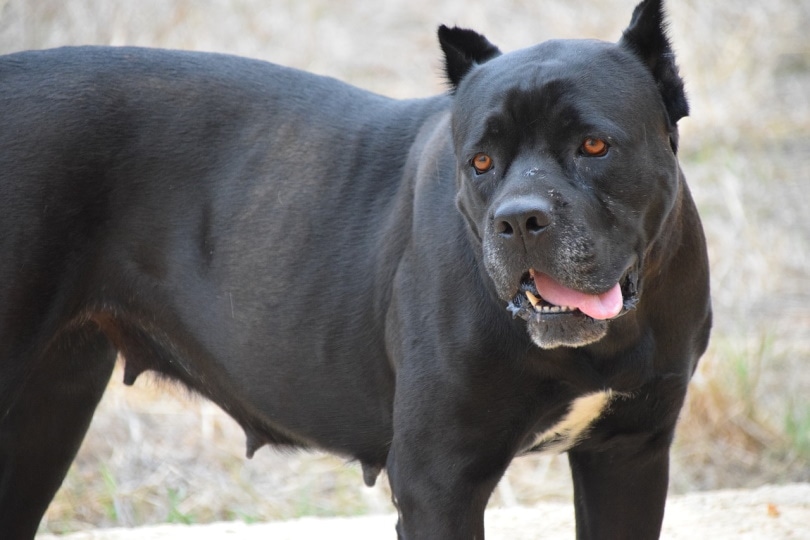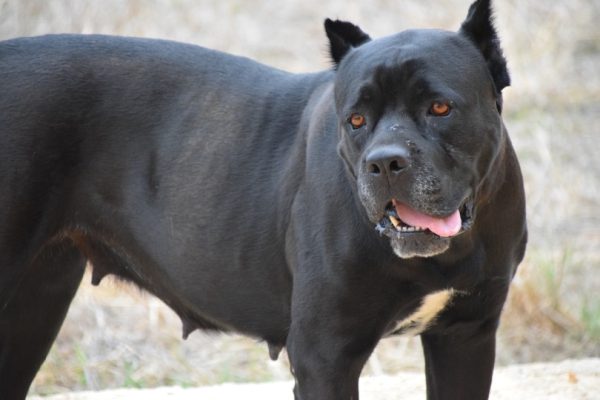The Cane Corso is a breed of Italian Mastiff with a claim to fame—it has one of the strongest dog bites in the world. Their bite force PSI is somewhere around 700. This means that their bite exerts 700 pounds of force on every square inch of whatever it is biting. That is higher than the average lion’s bite force! Let’s get more details on this powerful animal.
Calculating a Dog’s Bite Force
You might wonder how one measures a dog’s bite force. In the past, scientists tried to guess based on head size, skull anatomy, and dog bite injuries. These factors can all influence a dog’s bite force, but they can’t measure it directly. Today, specialized equipment is designed to measure the extreme force a Cane Corso can exert with its jaw. Dogs can bite a piece of equipment called a Digital Bite Meter that will calculate the PSI being applied.
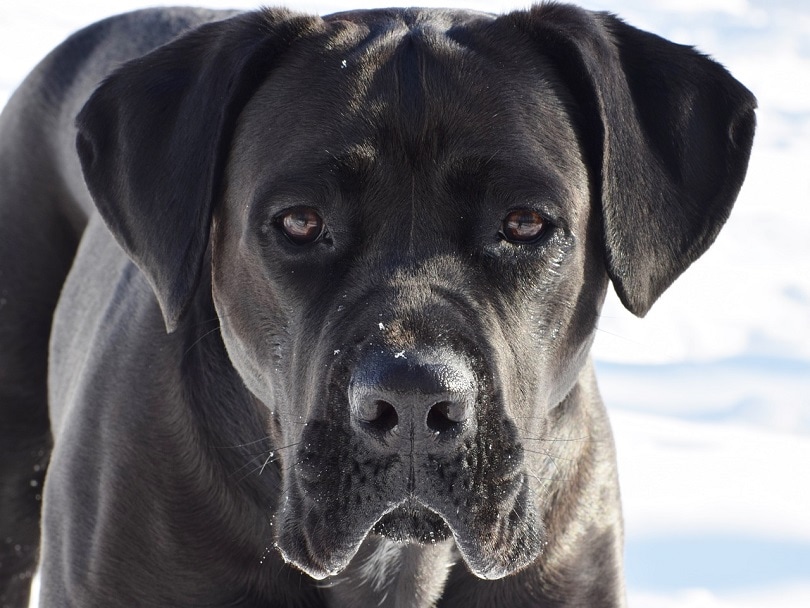
What Does 700 PSI Mean?
PSI stands for pounds per square inch and refers to the amount of pressure that something is under. PSI is used to measure everything from the amount of force in an animal’s bite to how easy it is to crush something. Unless you work with PSI on a regular basis, it can be hard to know what exactly 700 PSI means.
- The human body can withstand about 50 PSI in a sudden impact.
- Humans can bite at around 162 PSI.
- The US Navy’s deepest submarines are able to survive about 700 PSI of pressure.
- Standard housing bricks can be crushed at about 700 PSI as well.
- 700 PSI is right between the bite force of a lion (650 PSI) and a grizzly bear (950 PSI).
What Is a Cane Corso?
Cane Corso dogs are descended from Roman dogs that were used as hunting and guard dogs. They are big, bulky dogs with squarish heads and powerful bodies, and today they are a highly active breed. Although they are rare outside of Italy, they have a reputation for their protective natures and physical prowess.
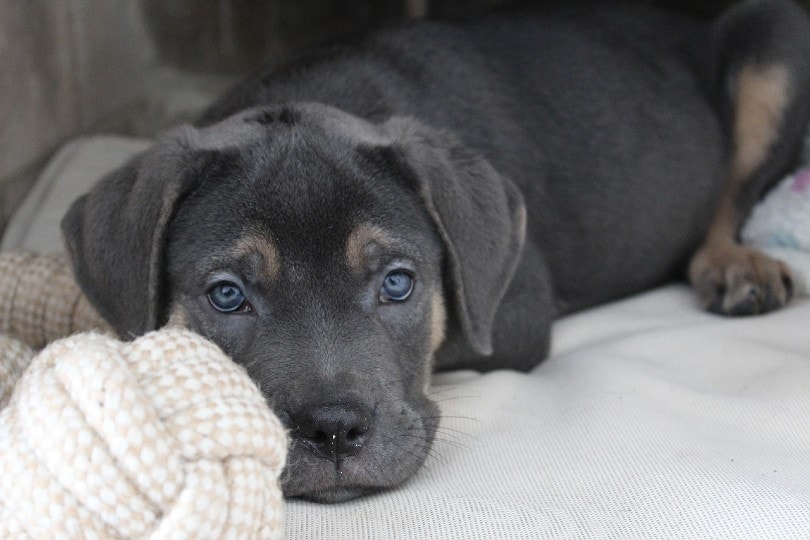
Dangers of Owning a Cane Corso
Cane Corso dogs aren’t inherently aggressive, but they are large, powerful breeds that can be dangerous. They also have a history of being used in dogfighting and as guard dogs. Because of this, extra care should be taken with Cane Corso dogs to socialize and train away any aggressive instincts. It can be irresponsible and dangerous to take on a Cane Corso if you aren’t an experienced owner with the time to properly socialize and train your new dog.
Is “Lockjaw” Real?
Sometimes it is reported that Cane Corso dogs have a special ability to lock their jaws when biting, making it impossible to pry free and making it so that the dog can exert that force as long as it needs to. But “lockjaw,” as this ability is sometimes called, is a little bit of a misnomer. Cane Corso dogs do not have any special ability to keep their jaws closed without effort, but they are incredibly strong and are known to clamp down and refuse to let go. This is probably where the incredible locking jaw stories come from. But this isn’t unique to Cane Corso dogs—if you tussle over a rope with any puppy, you’ll see that any kind of dog knows how to hold on tight with their jaws. Cane Corso dogs just happen to be especially strong.
Why Do Dogs Bite?
Cane Corso dogs are known for having some of the strongest jaws of all dogs, but any dog bite is serious. Dogs with a habit of biting are dangerous to humans and other dogs. There are many reasons dogs will bite including poor socialization, breed tendencies, and prey instincts. Let’s explore some of these reasons and how owners can prevent dog bites.
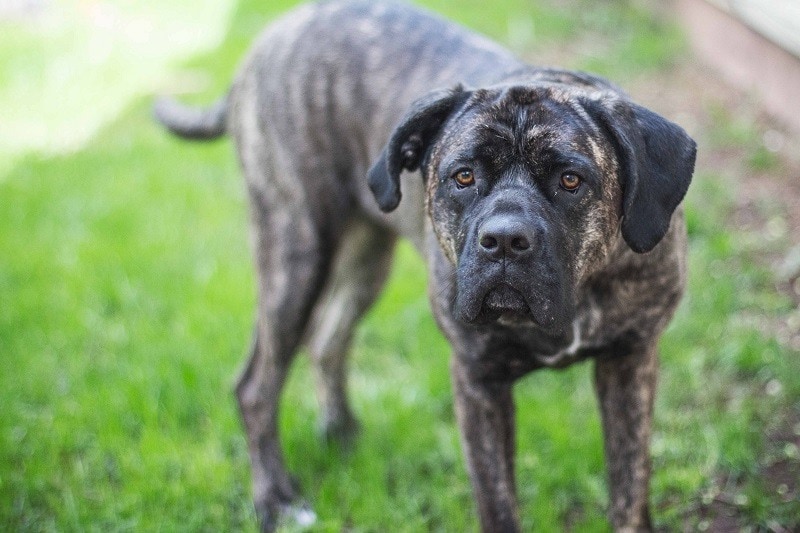
Socialization and Dog Bites
Socialization refers to the way dogs learn to interact with others based on their training and life experiences. A dog with good socialization will view humans as safe and non-threatening. They will be generally good-mannered and can be trained to avoid poor behaviors. Socialization starts at birth and continues throughout a dog’s life.
Poor socialization is a major cause of dog bites. Dogs are much more likely to bite if they have been abused, mistreated, or neglected. Animals who have experienced abuse can sometimes be rehabilitated, but it is much safer to adopt a dog that has been socialized from birth.
Some kinds of training are a part of socialization. All dogs can be trained to have basic manners, including avoiding biting. Many dogs need training to understand when their playtime becomes painful for us humans or to know when strangers aren’t dangerous.
Breeds and Dog Bites
Some dog breeds are more likely to be aggressive than others. The exact factors that go into breed aggression are unknown. Large dogs are more likely to be viewed as aggressive because of their greater ability to hurt humans. Some breeds of dogs also have higher energy and greater protection instincts. These can lead to aggression if not properly managed.
Cane Corso dogs are large dogs with powerful bites. They also tend to be highly protective. Because of this, they are sometimes labeled as an aggressive dog breed. But no breed of dog is naturally aggressive or cruel. Any type of dog can be well-adjusted when properly trained and cared for, even if some require more experience than others.
Prey Instinct and Dog Bites
Dog bites can also be related to prey instincts. Dogs are carnivores and many breeds of dogs were developed to be good hunting companions. Today, dogs have instincts to chase after and bite other animals that were part of their ancestors’ hunting history. The strength of these instincts is different in different dogs and some breeds of dogs tend to have stronger prey instincts. In some dogs, prey instincts are mostly confined to chasing after smaller animals, but prey instincts can also increase dog bites.
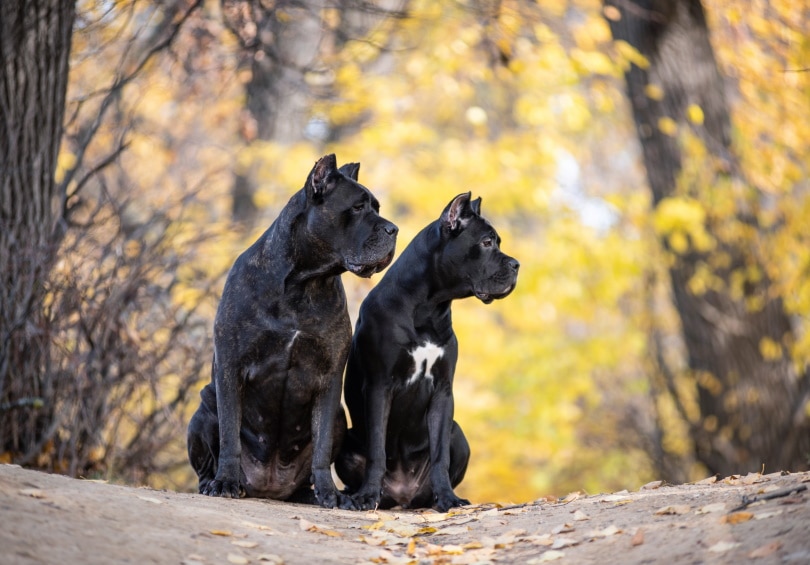
Preventing Dog Bites
Dog bites can be prevented through a mixture of training and precautions. Starting when they are puppies, dogs should be treated with kindness and positive reinforcement for good behaviors. Physical punishments can backfire and create anxious or aggressive dogs. Dogs are also more likely to be aggressive if they don’t get the exercise time they need to release pent-up energy and stay healthy. If an otherwise healthy, well-adjusted dog is aggressive to strangers or becomes too worked up during playtime, additional training can help. This includes obedience training, which lets owners stop a dog with a word or gesture, and behavior training which gets to the root of issues.
Along with training and socialization, responsible dog ownership includes taking precautions against dog bites, especially in large breeds. This might mean having a safe space to put a dog in case he becomes frightened or angry. It could also mean knowing when to keep your dog on a leash instead of letting it run free.
 Summary
Summary
The Cane Corso has a truly incredible bite—one of the strongest bites of any breed of dog. Their big, squarish jaws can exert over 700 PSI of force, making them formidable. Owners of Cane Corso dogs should be prepared to spend time socializing and training their dogs because of their size and strength. Safe practices around large dogs like the Cane Corso can save a life.
Related reads:
- How Strong Is A Boerboel’s Bite Force? (PSI Measure & Facts)
- Cane Corso vs Rottweiler: Which to Choose?
- 10 Best Dog Foods for Cane Corsos
Featured Image Credit: Ulrike Leone_Pixabay

